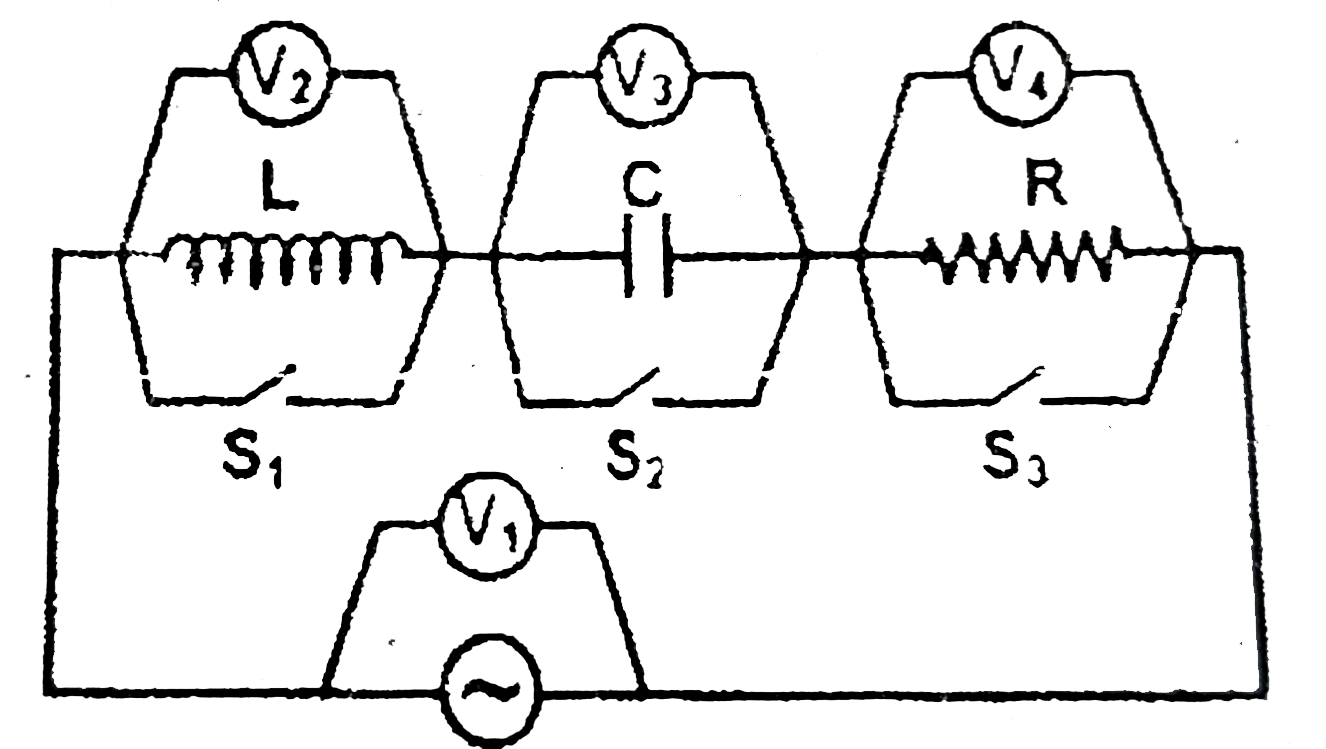Each of two vectors →D1and→D2 lies along a coordinamte axis in the x-y plane. Each vector has its tail at the origin, and the dot product of the two vectors is →D1,→D2=−∣∣→D1∣∣.∣∣→D2∣∣ Which is possiblility is correct ?
→D1and→D2 both lie along the positive x-axis.
→D1 lies along the positive x-axis →D2 lies along the negative x-axis.
→D1and→D2 both lie along the positive y-axis.
→D1 lies along the negative x-axis →D2 lies along the negative y-axis.
The correct Answer is:B
To solve the problem, we need to analyze the given information about the two vectors →D1 and →D2.
1. Understanding the Dot Product:
The dot product of two vectors →D1 and →D2 is given by the formula:
→D1⋅→D2=|→D1||→D2|cosθ
where θ is the angle between the two vectors.
Hint: Recall that the dot product can be positive, negative, or zero depending on the angle between the vectors.
2. Given Condition:
We are given that:
→D1⋅→D2=−|→D1||→D2|
This implies that:
|→D1||→D2|cosθ=−|→D1||→D2|
From this, we can deduce that:
cosθ=−1
Hint: When cosθ=−1, it indicates that the angle θ is 180 degrees.
3. Interpreting the Angle:
An angle of 180 degrees means that the two vectors are pointing in opposite directions. This is characteristic of anti-parallel vectors.
Hint: Visualize the vectors on the coordinate axes to see how they can be oriented.
4. Positioning the Vectors:
Since both vectors lie along the coordinate axes in the x-y plane and have their tails at the origin, we can conclude:
- If →D1 points in the positive x-direction, then →D2 must point in the negative x-direction.
- If →D1 points in the positive y-direction, then →D2 must point in the negative y-direction.
Hint: Draw a diagram to visualize the vectors along the axes.
5. Possible Configurations:
Based on the above analysis, the possible configurations of the vectors are:
- →D1 along the positive x-axis and →D2 along the negative x-axis.
- →D1 along the positive y-axis and →D2 along the negative y-axis.
Hint: Check the options provided in the question to see which configurations match the analysis.
6. Conclusion:
The correct possibility is that →D1 and →D2 are anti-parallel vectors. Thus, they can either be:
- →D1 along the positive x-axis and →D2 along the negative x-axis, or
- →D1 along the positive y-axis and →D2 along the negative y-axis.
Hint: Look for the configurations that reflect this anti-parallel nature.
The dot product of two vectors →D1 and →D2 is given by the formula:
→D1⋅→D2=|→D1||→D2|cosθ
where θ is the angle between the two vectors.
We are given that:
→D1⋅→D2=−|→D1||→D2|
This implies that:
|→D1||→D2|cosθ=−|→D1||→D2|
From this, we can deduce that:
cosθ=−1
An angle of 180 degrees means that the two vectors are pointing in opposite directions. This is characteristic of anti-parallel vectors.
Since both vectors lie along the coordinate axes in the x-y plane and have their tails at the origin, we can conclude:
- If →D1 points in the positive x-direction, then →D2 must point in the negative x-direction.
- If →D1 points in the positive y-direction, then →D2 must point in the negative y-direction.
Based on the above analysis, the possible configurations of the vectors are:
- →D1 along the positive x-axis and →D2 along the negative x-axis.
- →D1 along the positive y-axis and →D2 along the negative y-axis.
The correct possibility is that →D1 and →D2 are anti-parallel vectors. Thus, they can either be:
- →D1 along the positive x-axis and →D2 along the negative x-axis, or
- →D1 along the positive y-axis and →D2 along the negative y-axis.
Topper's Solved these Questions
- VECTORS BOOK - RESNICK AND HALLIDAYCHAPTER - VECTORS EXERCISE - PROBLEMS
34 Videos
- UNITS AND MEASUREMENT BOOK - RESNICK AND HALLIDAYCHAPTER - UNITS AND MEASUREMENT EXERCISE - PRACTICE QUESTIONS (MATRIX-MATCH)
11 Videos
- WAVE - IIBOOK - RESNICK AND HALLIDAYCHAPTER - WAVE - IIEXERCISE - PRACTICE QUESTIONS (INTEGER TYPE)
5 Videos
Similar Questions
Knowledge Check
Two vectors β=4ˆi+3ˆj and γare perpendicular to each other in the XY-plane. The vector in the same plane having the projection 1,2 along β and γ is
A2ˆi+ˆjB3ˆi−ˆjC2ˆi−ˆjD−2ˆi+ˆjTwo thin slabs of refractive indicies μ1 and μ2 are placed parllel to each other in the x−z plane. If the direction of propagation of a ray in the two media are along the vectors →r1=aˆi+bˆj and →r2=cˆi+dˆj and ˆn is unit vector along the common normal of the slabs, then we have
 Aμ1b√a2+b2=μ2d√c2+d2Bμ1a√a2+b2=μ2c√c2+d2C→r1⋅(ˆn×→r2)=0D→r1×(ˆn×→r2)=0
Aμ1b√a2+b2=μ2d√c2+d2Bμ1a√a2+b2=μ2c√c2+d2C→r1⋅(ˆn×→r2)=0D→r1×(ˆn×→r2)=0Two force vectors →F1 and→F2 , each of magnitude 10 N act at a point at an angle of 60°. The magnitude of resultant force vector is
A10NB10√3 NC20 ND20√3N
A vector →F1 is along the positive X-axis. If its vectors product with another vector →F2 is zero then →F2 could be
View SolutionThe dot product of two vectors vanishes when vectors are orthogonal and has maximum value when vectors are parallel to each other. Explain.
View SolutionThe vectors →aand→b are non collinear. Find for what value of x the vectors →c=(x−2)→a+→band→d=(2x+1)→a−→b are collinear.?
View SolutionIf vector →C is added to vector →D, the results is a third vector that is perpendicular to →D and has a magnitude equal to 3→D. What is the ratio of the magnitude of →C to that of →D ?
View SolutionLet →b=4ˆi+3ˆjand→c be two vectors perpendicular to each other in the xy-plane. Find all vetors in te same plane having projection 1 and 2 along →band→c respectively.
View Solution
